March 2024
March 11, 2024
Electricura Shoes
John Wilson Gibbs claimed that his patented "electric shoe" would cure rheumatism.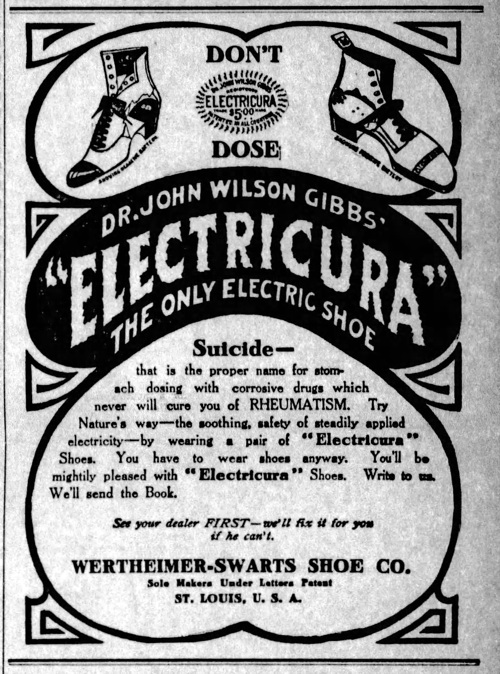
Kansas City Star - July 23, 1907
How the shoes generated electricity is explained in his 1903 patent (No. 740,548). They contained zinc and copper nails. The two metals, when combined with sweaty feet, would form a galvanic cell, producing a mild electric current.
The sole of the shoe is shown at A, and in the upper surface thereof there are driven or otherwise inset a series of nails or studs B, with each of which there is associated a similar nail or stud C. The studs of the series B are preferably of zinc and those of the series C preferably of copper, thereby providing pairs of elements of dissimilar metals or opposite in sign such that when contacted with by the foot of the wearer from the influence of the warmth or moisture of the person or for other reasons an electric current will be generated, passing from one element to the other through the body of the wearer. The medical and therapeutic effects of such a current are well known, and I claim herein only the specific construction of the means for obtaining such a current.
What he doesn't mention is that the metals would quickly corrode, at which point the electricity would stop. Not that such a tiny amount of electricity would have had any therapeutic effect anyway.
Of course, this was back in the era when adding the word "electric" to any product was a sure way to give it more consumer appeal. A long time ago I had a brief article published in Smithsonian magazine in which I gave some examples of this phenomenon.
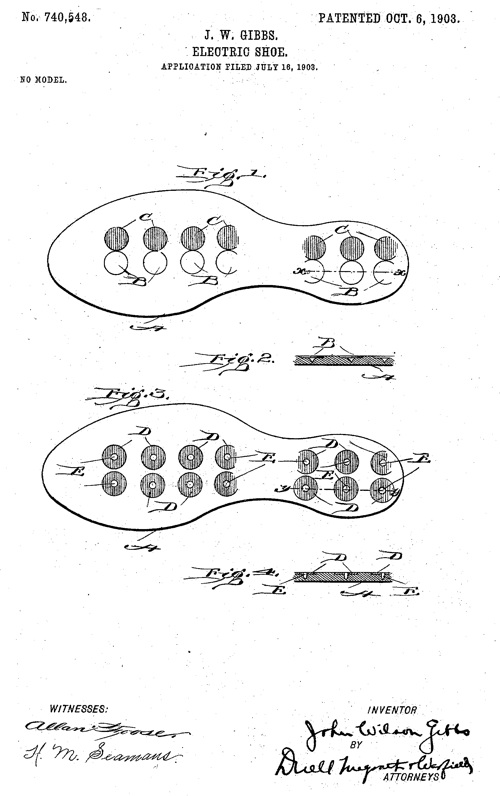
Posted By: Alex - Mon Mar 11, 2024 -
Comments (3)
Category: Patents, Shoes, 1900s
The Conqueroo
No Wikipedia entry, but here's an interview with one of the founders.
Posted By: Paul - Mon Mar 11, 2024 -
Comments (2)
Category: Excess, Overkill, Hyperbole and Too Much Is Not Enough, Music, Psychedelic, 1960s
March 10, 2024
Miss Electric Bedding
Advertising Age ran a photo of "Miss Electric Bedding" in its Nov 10, 1952 issue. But it didn't give her name.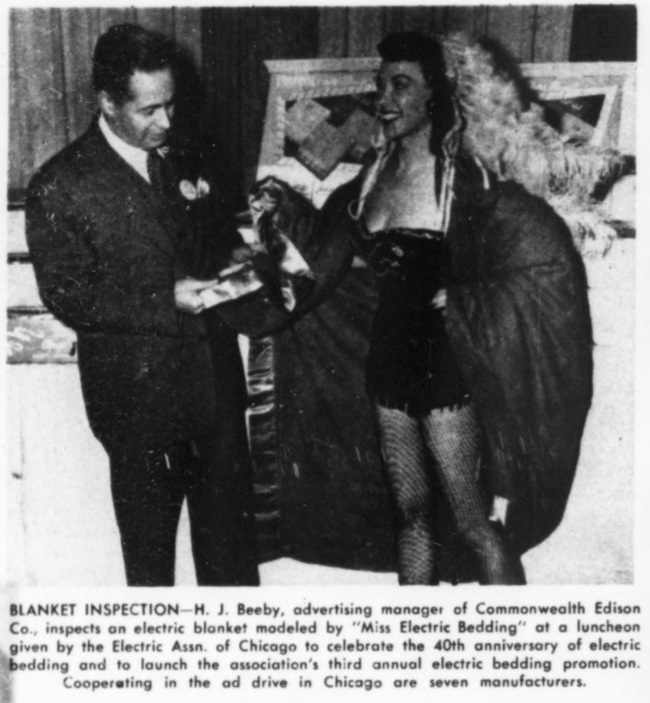
Advertising Age - Nov 10, 1952
A month later, reports appeared in a number of newspapers stating that actress Viveca Lindfors had declined to be crowned "Miss Electric Bedding."
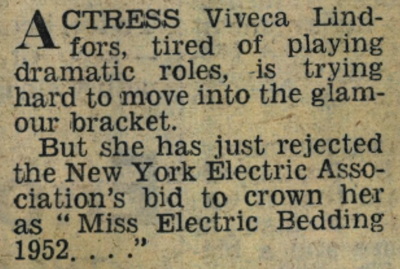
Daily Mirror - Dec 16, 1952
I'm not sure if that's Viveca Lindfors in the Advertising Age photo, but it definitely could be. I'm leaning towards thinking it is. And if it is, it's confusing why it was reported that she declined to be Miss Electric Bedding. After all, there she is.
My best guess: the Advertising Age photo shows her modeling as Miss Electric Bedding for the Chicago Electric Association. The later news report says she refused an offer from the New York Electric Assn. So she must have done the electric bedding modeling gig in Chicago, but then declined to do it elsewhere.

Viveca Lindfors - image source: wikipedia
Posted By: Alex - Sun Mar 10, 2024 -
Comments (1)
Category: Awards, Prizes, Competitions and Contests, 1950s
Thomas Snell’s Millions
Rich people are weird.Before dipping into this story, some perspective on the value of the estate.
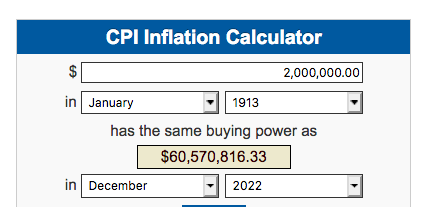

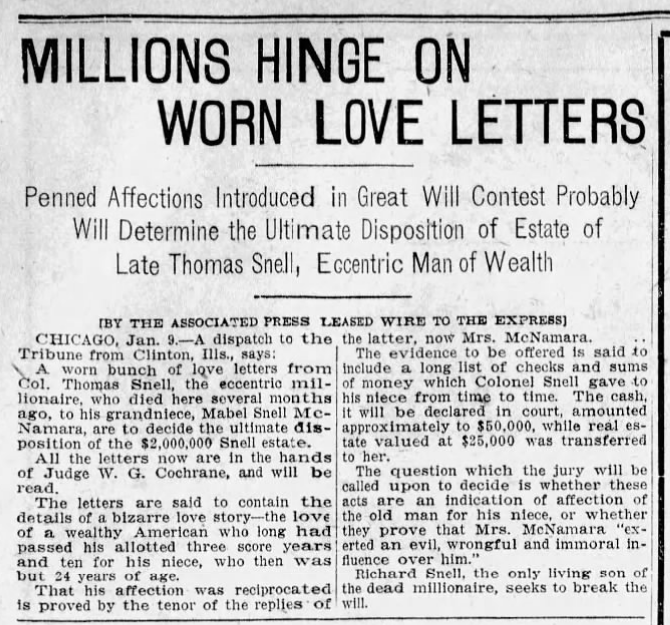

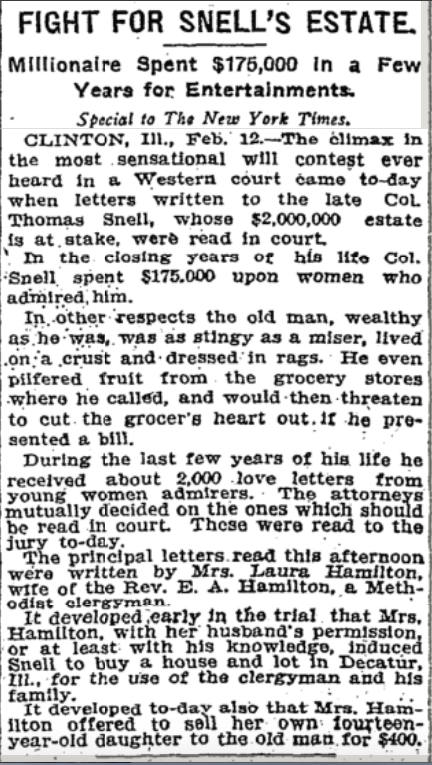

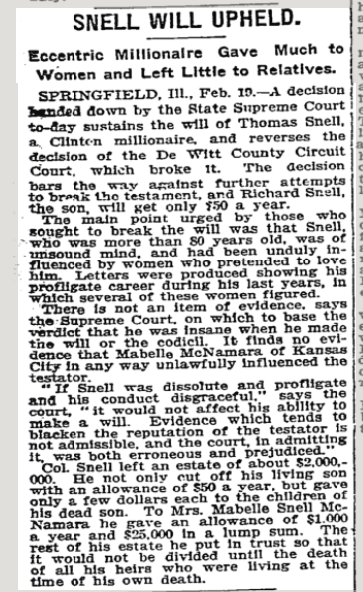
And as final icing on the cake.


Posted By: Paul - Sun Mar 10, 2024 -
Comments (0)
Category: Death, Money, Lawsuits, 1900s, Women
March 9, 2024
Humanoid Hugging Assembly
Walton Richardson of Murfreesboro, Tennessee was recently granted a patent (No. 11865695) for a "humanoid hugging assembly."The headless, animatronic torso says phrases such as, "I know you need a hug," "Come get a hug," and "You are special." When someone approaches it spreads its arms invitingly, and then it hugs them.
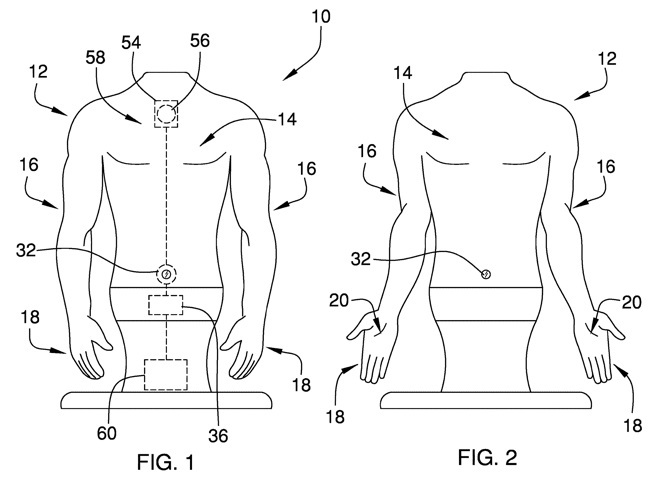
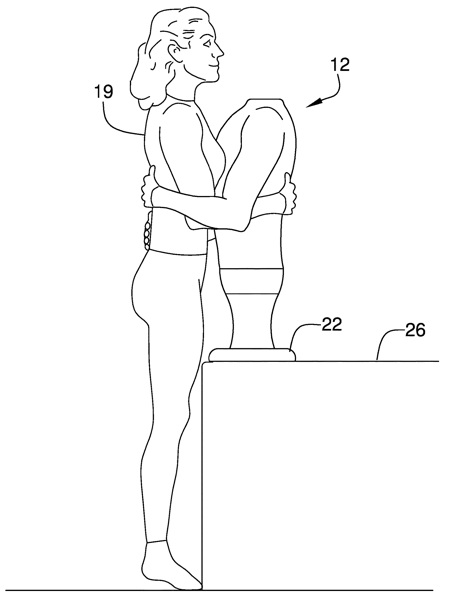
Posted By: Alex - Sat Mar 09, 2024 -
Comments (2)
Category: Patents
Miss Moon Maid of 1965
More fotos and text at the link.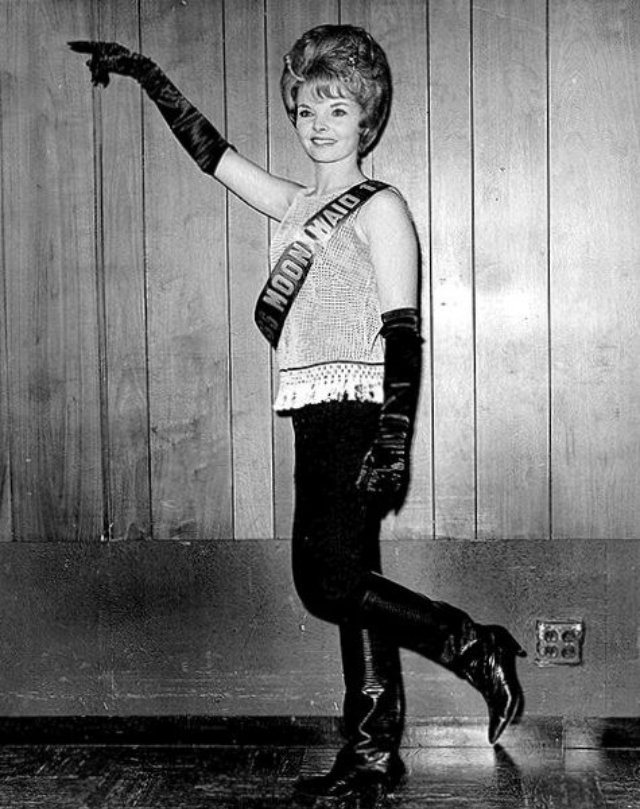
Posted By: Paul - Sat Mar 09, 2024 -
Comments (0)
Category: Awards, Prizes, Competitions and Contests, Beauty, Ugliness and Other Aesthetic Issues, Comics, Space Travel, 1960s
March 8, 2024
Flutist visited by Bach
We posted recently about Rosemary Brown who claimed she was visited by the ghosts of famous composers such as Liszt and Beethoven who shared new musical works with her.The flutist Paula Robison reported a similar experience. She was feeling nervous about her upcoming project to record all of Bach's sonatas for flute and harpsichord, when the ghost of Bach appeared beside her as she was frying liver in her kitchen. He appeared to be "very hot and uncomfortable and impatient." He then said, "Just play it. Play it and enjoy it."
The ghosts of composers really seem to be an active bunch.
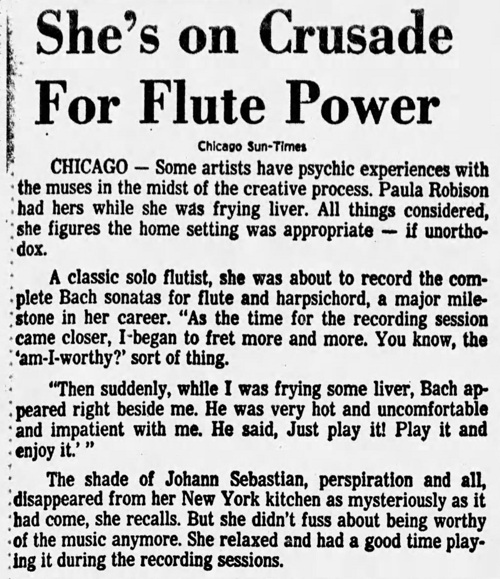
Atlanta Journal - Nov 25, 1976
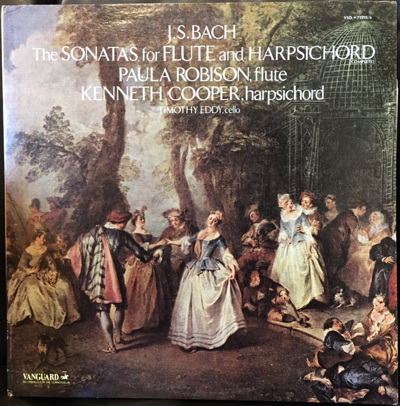
Posted By: Alex - Fri Mar 08, 2024 -
Comments (0)
Category: Death, Music
RIP Pigcasso
The artist's Wikipedia page.
Posted By: Paul - Fri Mar 08, 2024 -
Comments (2)
Category: Animals, Art, Obituaries, Africa, Natural Wonders
March 7, 2024
A case of hypervaccination
The Lancet reports on the case of a 62-year-old German man who received 217 Covid vaccinations over a period of 29 months. That works out to getting vaccinated approximately every four days.When I got the Covid vaccine I felt for a day like I'd been run over by a truck. The German hypervaccinator, on the other hand, felt no vaccine-related side effects.
Presumably the guy thought that all the vaccinations would give him super-immunity. When medical professionals realized what he had done, however, they were more worried that the opposite would happen — that he would build up "immune tolerance" and be more susceptible to Covid, not less. But when they checked him out, he seemed just fine.
More info: arstechnica.com
Posted By: Alex - Thu Mar 07, 2024 -
Comments (2)
Category: Medicine
Mystery Gadget 109
What's it for?The answer is here.
Or after the jump.
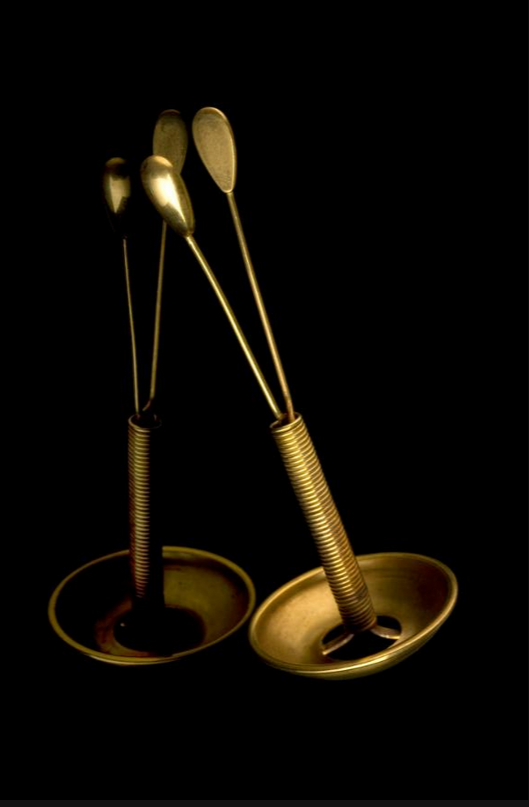
More in extended >>
Posted By: Paul - Thu Mar 07, 2024 -
Comments (3)
Category: Technology, Nineteenth Century
| Get WU Posts by Email | |
|---|---|

| Who We Are |
|---|
| Alex Boese Alex is the creator and curator of the Museum of Hoaxes. He's also the author of various weird, non-fiction books such as Elephants on Acid. Paul Di Filippo Paul has been paid to put weird ideas into fictional form for over thirty years, in his career as a noted science fiction writer. He has recently begun blogging on many curious topics with three fellow writers at The Inferior 4+1. Chuck Shepherd Chuck is the purveyor of News of the Weird, the syndicated column which for decades has set the gold-standard for reporting on oddities and the bizarre. Our banner was drawn by the legendary underground cartoonist Rick Altergott. Contact Us |

